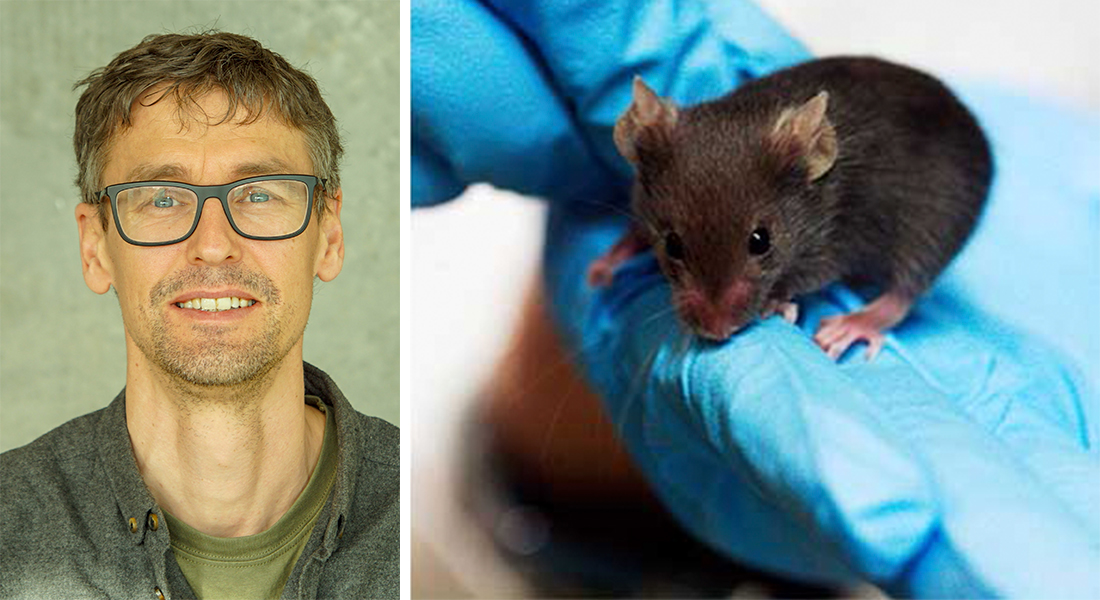Researcher portrait: I am driven by the process, the commercial aspect and competent people
Associate Professor Andreas Toft Sørensen from the Department is in charge of a pain project that may help thousands of people with chronic pain. The researcher is particularly fascinated by the journey to get there.

Andreas Toft Sørensen has studied and researched abroad, where he has learned that it pays off to share your research ideas with other research colleagues. He is convinced that this approach gives better research results, as external input, knowledge or know-how will often improve the idea:
'It's about having the confidence and courage to share your ideas. I definitely encourage sharing your idea in its infancy both with other researchers and with the Tech Trans Office. You will most likely discover that it only takes a little extra knowledge and perspective to improve the idea. Networking and openness are the alpha and omega for me in my research approach'.
He often makes use of the so-called CDAs (confidential disclosure agreements) when he shares his ideas with players outside of UCPH. That is, a legal document that ensures that knowledge is treated confidentially as long as the discovery has not been made public.
Positive energy in hard work
Andreas Toft Sørensen was originally trained as a human biologist at UCPH and later in experimental neurology at Lund University in Sweden. A time that, according to him, shaped him as a researcher:
'My time in Sweden gave me the competencies within my field of research and the academic virtues. I learned to analyse data and extract knowledge in gene therapy and understood how this treatment concept can benefit patients in a near future'.
In 2011, Andreas Toft Sørensen got a job at MIT (Massachusetts Institute of Technology) and worked for four years making genetic tools within memory research. This was where he really started to open his eyes to the possibility of commercialising his research ideas:
'At MIT, I learned to work hard in a competitive environment. I found very positive energy in it. In the US, they have a very proactive mindset in terms of conducting the finest research in their field and taking ideas seriously from the beginning with a focus on patenting.
There is a lot of money involved, so it is natural for them to focus on the commercialisation aspect early in the process. At Danish universities, it is a tradition that you only do it later, and perhaps too late'.
Early interaction with external players
Andreas Toft Sørensen uses the proactive and hard-working mindset every day. His goal is to establish a sustainable company that can get his research off the launching pad and outside UCPH's walls. He is well on his way on that journey and has already gained a lot of useful experiences:
'If you are going to run a project toward company formation, it is important to have control of three things: to have contact with clinical experts, to interact with professionals who can drive the commercial aspects and to find competent researchers who can take care of the basic research. To a large extent, we can take care of the basic research ourselves, but with regard to the other two aspects, it is an advantage to include others. If you want to follow the road to doing something commercially, then you have to interact with external players at an early stage'.
Andreas Toft Sørensen has, among other things, received external sparring to define the work tasks on the pain project in a different way than with a traditional research grant, where the hypothesis is usually defined and uncovered. It may, for example, be to only pursue tracks if they add value, and value is whether this may be commercially interesting in the long run. According to Andreas, this has given him resources to do things that you cannot normally get funding for, such as commercial development and pre-clinical trials with commercial players.
'In the pain project, we have, among other things, made extensive use of contract research organisations (CRO). It is untraditional that we get a professional company that is an expert in the field to perform, for example, animal experiments. It is expensive, but fast', Andreas adds.
The balance between discovery and patent
Andreas Toft Sørensen clearly remembers the unique experience of a result that added value. With the help of colleagues from Aarhus University, his research team had infected mice with chronic pain with a virus in the spinal cord. When the result came back, he knew that this was very special.
'All the results were unique. It was an insane finding. We had found a method that completely relieved the mice of pain for up to 50 weeks after the injury. My first thought was that we had discovered some unique biology, then followed an elation scenario and finally the realisation that we could not publish the result', says Andreas Toft Sørensen.
If, as a researcher, you have a result that is commercially interesting, you cannot immediately publish or present the result. Not at congresses, in professional communities or to colleagues with hints to the project. Because then there is the risk that the idea and the result have no inventive value, and that a patent cannot be taken out. And without a patent, there are no funding options toward a future treatment.
'It is generally difficult to know when you have made a discovery with a potential commercial value. It may be difficult to navigate, for example, when to start communicating with the Tech Trans Office, but in this project, I quickly knew that we had to act confidentially, and then we set off on the tender trail toward a patent', says Andreas Toft Sørensen, who continues to work with his pain project and the establishment of a company.
